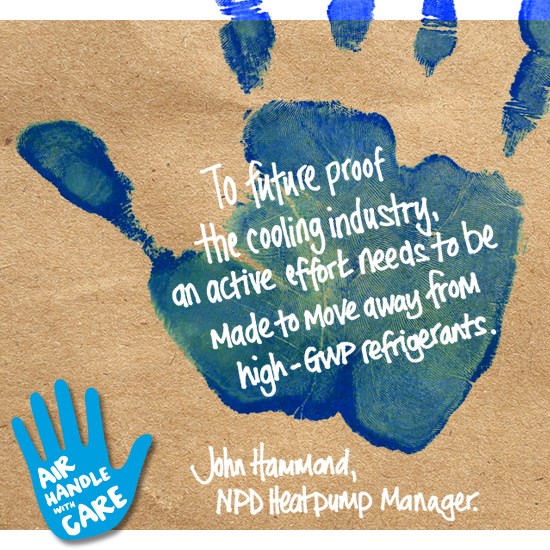
The Future of Refrigerants
Balancing Safe Working with Environmental Concerns
Refrigerants are becoming a larger part of our daily lives
Written by John Hammond, NPD Heat Pump Manager November 2022
Whether in the form of air conditioning in offices, shops, and cars, or even keeping our food cold, refrigerants are everywhere. But as we start placing more reliance on these gases, it’s important to consider the serious effect they have on the climate.

Refrigerants are essential to modern living, but the effect they have on the planet is considerable. In fact, the cooling industry accounts for 10% of global CO2 emissions[1]. Not only do cooling systems use a considerable amount of energy, but refrigerant gases are also bad for the ozone. Hydrochlorofluorocarbon (HCFC) and chlorofluorocarbon (CFC) refrigerants are greenhouse gases, breaking down the ozone if released into the atmosphere, leading to global warming
Each type of refrigerant has a Global Warming Potential (GWP) – a figure that allows us to compare the global warming impacts of different gases. CO2 acts as the base, with a GWP of 1. As an example, R410a refrigerant has a GWP of 2088 – this translates into an equivalent of 2088 metric tons of CO2. It’s for this reason that effort is being made to move away from high-GWP refrigerants.
[1] University of Birmingham (2016) Clean Cold and the Global Goals.
The Drive Towards Lower-GWP Refrigerants
To future-proof the cooling industry, an active effort needs to be made to move away from high-GWP refrigerants. Not only do air conditioning plants using low-GWP refrigerants use less energy, but the gases are also less harmful to the planet. This reduced energy usage as well as lower warming potential is a big leap in helping reduce global carbon footprints for the cooling industry.
Legislation and standards are driving our industry in the direction of lower-GWP gases via a wider acceptance of flammable refrigerants. Often, low-GWP refrigerants are more flammable and require a smaller charge, however, the industry is pushing these in favour of lowering global warming. But it would be foolish to ignore the added safety concerns and requirements that come with using these newer refrigerants. As we move towards lower-GWP refrigerants, safety needs to remain a key concern.
When working with A2L and A3 flammable gases, workers need to be aware of the added danger and the differences and nuances when working with different refrigerant types. An understanding of what constitutes as safe working for each refrigerant, as well as a general understanding of how to safely work with pressure equipment and explosive substances is vital. An industry-wide commitment to upskilling F-gas engineers to a higher understanding of PE(S)R and safe working practices (DSEAR) will help safeguard and futureproof the industry for the changes to come.
The future of the cooling industry will have a heavy focus on the difficulty of ensuring the safe working whilst also lowering our environmental impact. As we start to develop and use refrigerants with lower environmental impacts, constant training needs to be enforced to ensure our workforce is confident and keeping up with the ever-changing market. The cooling industry of the future is due to look very different to the cooling industry of today, but with an industry-wide commitment and enough investment, we can ensure safe working practices whilst also lowering the industry’s carbon footprint.
